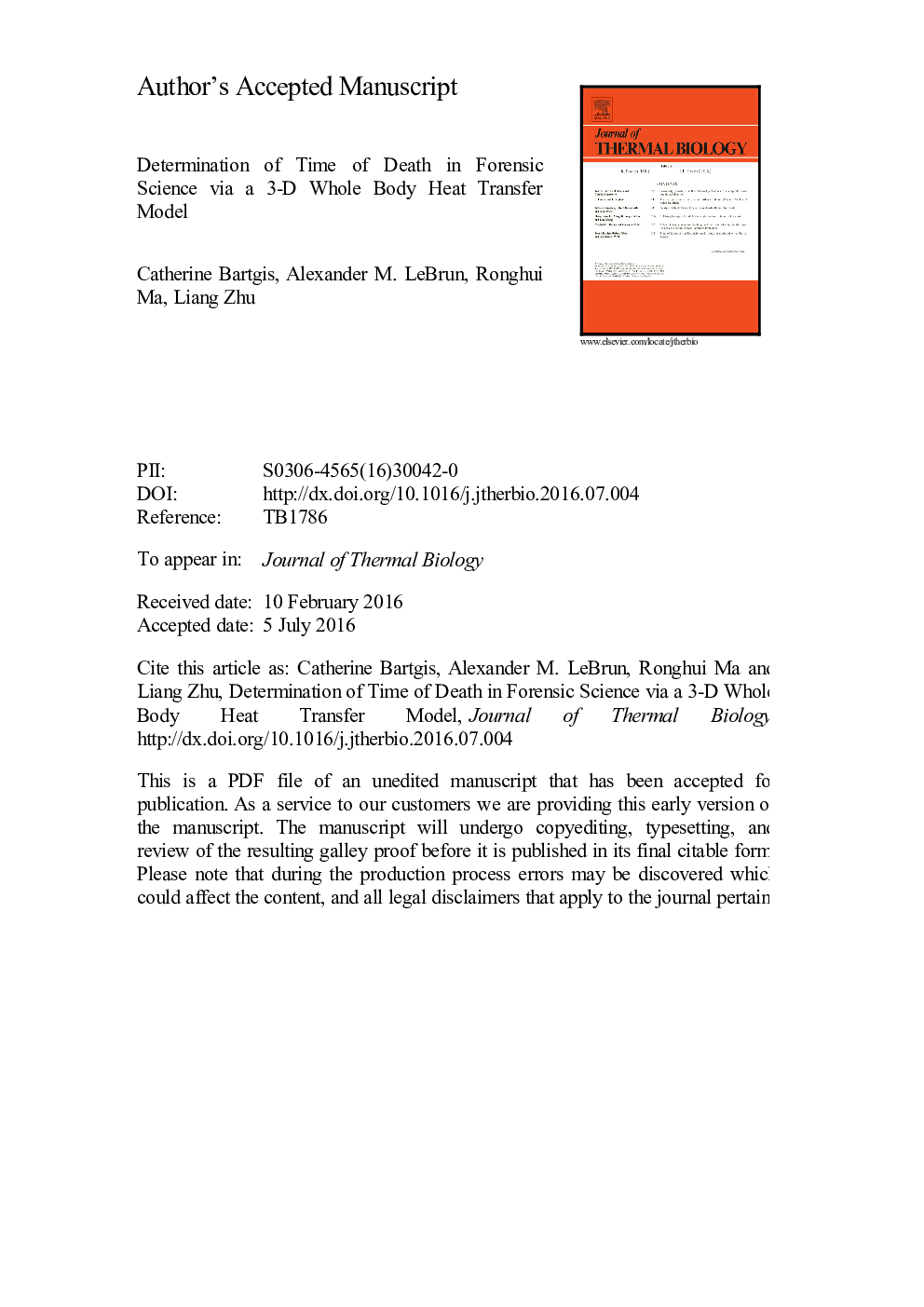| Article ID | Journal | Published Year | Pages | File Type |
|---|---|---|---|---|
| 5593474 | Journal of Thermal Biology | 2016 | 33 Pages |
Abstract
This study is focused on developing a whole body heat transfer model to accurately simulate temperature decay in a body postmortem. The initial steady state temperature field is simulated first and the calculated weighted average body temperature is used to determine the overall heat transfer coefficient at the skin surface, based on thermal equilibrium before death. The transient temperature field postmortem is then simulated using the same boundary condition and the temperature decay curves at several body locations are generated for a time frame of 24Â h. For practical purposes, curve fitting techniques are used to replace the simulations with a proposed exponential formula with an initial time delay. It is shown that the obtained temperature field in the human body agrees very well with that in the literature. The proposed exponential formula provides an excellent fit with an R2 value larger than 0.998. For the brain and internal organ sites, the initial time delay varies from 1.6 to 2.9Â h, when the temperature at the measuring site does not change significantly from its original value. The curve-fitted time constant provides the measurement window after death to be between 8Â h and 31Â h if the brain site is used, while it increases 60-95% at the internal organ site. The time constant is larger when the body is exposed to colder air, since a person usually wears more clothing when it is cold outside to keep the body warm and comfortable. We conclude that a one-size-fits-all approach would lead to incorrect estimation of time of death and it is crucial to generate a database of cooling curves taking into consideration all the important factors such as body size and shape, environmental conditions, etc., therefore, leading to accurate determination of time of death.
Related Topics
Life Sciences
Agricultural and Biological Sciences
Agricultural and Biological Sciences (General)
Authors
Catherine Bartgis, Alexander M. LeBrun, Ronghui Ma, Liang Zhu,
